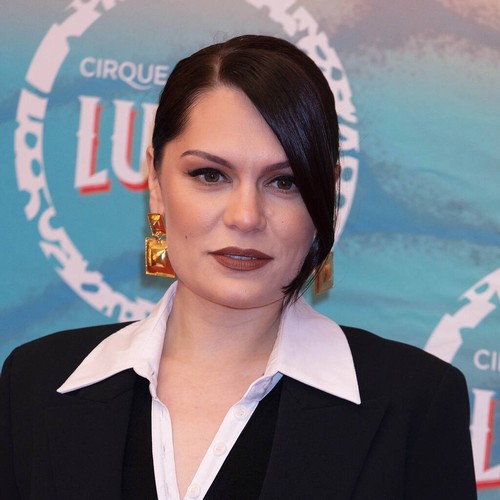We’re starting off our summer 2023 edition of the Book Club with a book that’s about as timely as you could hope for: Kim Stanley Robinson’s 2020 novel The Ministry for the Future, which imagines a very near future of catastrophic climate change and a decades-long process of humanity’s attempts to bring the climate crisis … well, not under control, but to at least to remake politics and economics in a direction that’s better suited to survival of the Earth’s inhabitants.
For this week, I asked you to read the first chapter, which is fairly short, and and tends to stay with you after you read it. If you just got here and want to catch up, the publisher, Orbit Books, conveniently posted Chapter 1 in full right on the interwebs for free! The discussion from here will involve spoilers for the first chapter, so take a few minutes to go read it … or maybe the discussion here will make you want to go read it.
Last summer, novelist Monica Byrne tweeted for a lot of us who have read the book:
I feel like my circles have divided between those who’ve read the opening chapter of The Ministry for the Future and those who haven’t.
If you haven’t….you should. Because I basically can’t think about my future without it now.
Let’s jump in, shall we? In this brief chapter, we meet one of the novel’s many main characters, Frank May, an American everyliberal from Florida who’s working at the local office of an unnamed relief NGO in a small city in Uttar Pradesh state in India. A perfect storm of atmospheric conditions leads to a long heatwave, with heat and humidity at levels — a “wet bulb” temperature of 38 degrees C (103 degrees Fahrenheit) at dawn, with 35 percent humidity — that’s right on the edge of what human beings can survive.
Then the overstressed electrical grid goes down, all over the region. Things go from bad to worse. No one is coming to help. Frank does what little he can for several local families, inviting them into the clinic where he works, where there’s a single window air conditioner connected by an extension cord to a portable generator on the roof. He keeps for himself the last of the water in the clinic’s refrigerator, in a thermos jug he’s careful not to let anyone see.
The toilets back up, the temperature keeps rising, the oldest and the youngest start dying. On the second day with no power, a group of young men break in and point a gun at Frank, telling him they’ll be taking the AC and the generator.
“We need this more than you do,” one of them explained.
The man with the gun scowled as he heard this. He pointed the gun at Frank one last time. “You did this,” he said, and then they slammed the door on him and were gone.
And really, dear reader, Frank did. So did you. So did I. America and Europe filled the atmosphere with greenhouse gases for 150 years, and then other countries, like China, began adding their own greenhouse emissions. The countries already suffering from the worst effects of climate change — such as last year’s floods in Pakistan, which killed over 1,700 people and left millions homeless — are not the countries that caused the climate disaster.
By the end of the chapter, everyone in the city except Frank is dead. He’s the only person still alive in a shallow lake filled with corpses.
I’m reminded of the end of Flannery O’Connor’s story “A Good Man Is Hard to Find” (spoiler coming!), where the murderous serial killer the Misfit says of the grandmother he’s just killed — after her sudden realization that all humans are family to each other — “She would have been a good woman, if it had been somebody there to shoot her every minute of her life.”
The first chapter of The Ministry for the Future may just be the gun we all need pointed at our own heads to make us pay attention.
So let’s discuss a few things!
1) How are you doing? This chapter hits hard, but I also want to shake every elected leader in the country and tell them they have to read it. At Slate, Rebecca Onion, in an interview with Robinson, told him that the first chapter “gave me insomnia, dominated my thoughts, and led me to put the book down for a few months. Then I picked it back up and found that the remainder of it is actually quite optimistic.”
Robinson replies:
I wanted pretty much the response you described. Fiction can put people through powerful imaginative experiences; it generates real feelings. So I knew the opening scene would be hard to read, and it was hard to write. It wasn’t a casual decision to try it. I felt that this kind of catastrophe is all too likely to happen in the near future. That prospect frightens me, and I wanted people to understand the danger.
2) Did it work? That is, did the chapter make climate change more real to you? Or did it squick you out so badly that you stopped reading? (If so, do you think you’ll pick it up again?)
3) As you’ll see as we go along, this isn’t whizbang laser gun science fiction. There’s almost no technology we don’t have today — Robinson doesn’t even cheat by bringing cheap infinitely abundant fusion power online a decade from now. If anything, I think the “science” being fictionalized is about equal parts sociology and economics. Gee, I guess that was more a comment than a question.
4) Colonialism is a running theme in the novel, not only as a historical backdrop but, as is the case right now, in terms of how the damage from climate change hits less wealthy nations who had virtually nothing to do with wrecking the planet’s atmosphere. And yet our focus character for Chapter 1 is Frank, an American in India. We don’t get the perspective of any of the Indian characters, just the white outsider who witnesses their deaths. He’s also close to death, but he is the lone survivor. As we keep reading, I’d like to hear your thoughts on how Robinson navigates questions about affluent nations and the parts of the world that have climate change landing on them like a million-pound shithammer.
Those are just starters, of course, it’d be terribly boring if y’all only address those like essay questions. Feel free to disregard them if you want to talk about other stuff, including just your visceral reactions to the story — one of the things I loved about Glen Reed, my American Lit professor at Northern Arizona University, was that on the day we discussed “A Good Man Is Hard to Find,” he didn’t start off with the standard stuff about O’Connor’s work, her Catholic faith, and the way her stories often rise to a crisis and a “moment of grace.” Instead, he said that every time he’d read the story, it just scared the hell out of him to think of his own family in such a situation: having a car wreck out in the middle of nowhere because of a bad turn, and then the person who finds you is a killer. I loved him for that.
So let’s also talk about this chapter, and climate change, as humans. Let’s talk about the whole book that way.
Your assignment for next Friday is a lot more than for today: Let’s read through Chapter 30 (they’re mostly short chapters, some only a page or less).
And if you haven’t read the book (THIS week you can go do the reading right now of course), always feel free to join the conversation. It’s not a class and there won’t be a quiz. Also, no worries about spoilers, since for the most part this is an idea-driven book, not a plot-driven one. (We’ll talk about that more next week, including the fairly common complaint from some readers that after that holy shit first chapter, the rest of the book reads like a collection of white papers, not a novel.)
The one rule I am going to enforce strictly for this post is that, to keep the conversation focused, I will remove any off topic comments and ask you to save ’em for the open thread in a couple hours, please. I’d honestly like to keep the conversation going all weekend, and if you wanna come back and say more, please do so!
So talk!
[The Ministry for the Future (Wonkette gets a bit of sales from this linky) / Slate / Chapter 1 at Orbit Books]
Yr Wonkette is funded entirely by reader donations. If you can, please give $5 or $10 a month to help us keep this little mommyblog going!
























































![Key Metrics for Social Media Marketing [Infographic] Key Metrics for Social Media Marketing [Infographic]](https://www.socialmediatoday.com/imgproxy/nP1lliSbrTbUmhFV6RdAz9qJZFvsstq3IG6orLUMMls/g:ce/rs:fit:770:435/bG9jYWw6Ly8vZGl2ZWltYWdlL3NvY2lhbF9tZWRpYV9yb2lfaW5vZ3JhcGhpYzIucG5n.webp)









![4 Tips for Business Messaging Success [Infographic] 4 Tips for Business Messaging Success [Infographic]](https://www.socialmediatoday.com/imgproxy/0GLWSeFtjb0oVeePenuQZMRBkZds4p4Fhah357Wx9FI/g:ce/rs:fill:616:2756:0/bG9jYWw6Ly8vZGl2ZWltYWdlL21ldGFfbWVzc2FnaW5nX3RpcHNfaW5mby5wbmc.png)









